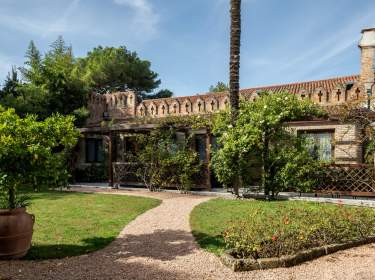The European green taxonomy
Towards sustainable finance


The European Green Taxonomy is a system for classifying economic activities that have a favourable impact on the environment. Its objective: to direct investment towards “green” activities.
Definition
What is the European Green Taxonomy?
The Green Taxonomy is a classification system developed by the European Union. Its methodological framework is designed to identify investments and economic activities that are truly environmentally sustainable. The aim is to provide a common language that distinguishes projects and activities with a positive impact on the environment, and thus promote sustainable growth.
One of the key aims of the Green Taxonomy is to provide a standard definition of what constitutes a sustainable economic activity. This helps investors, companies and stakeholders to focus on projects that are truly ecological and avoid “greenwashing”. Thus, in the long term, it must establish a common vocabulary for sustainable finance and enable transparent comparisons of sustainable investments across Europe.
The European Green Taxonomy works by obliging eligible companies to publish the share of their revenue, Capex and Opex that is eligible (“is the activity classified potentially sustainable?”) and aligned (“the activity is classified and meets the criteria in the regulation to be considered sustainable”).
The European Green Taxonomy works by obliging eligible companies to publish the share of their revenue, Capex and Opex that is eligible (“is the activity classified potentially sustainable?”) and aligned (“the activity is classified and meets the criteria in the regulation to be considered sustainable”).
For Covivio, the adoption of the European Green Taxonomy allows the company to accentuate its role as a committed actor working towards sustainable real estate through its various development, renovation and property management projects.
Achieve carbon neutrality by 2050
As part of its Green Deal, the European Union is committed to achieving carbon neutrality by 2050. An ambitious objective that demands serious resources. The Green Taxonomy creates a classification system for economic activities that have a favourable impact on the environment, with the aim of encouraging private investment towards these sustainable activities and so facilitating the transition to a low-carbon economy.
The European Green Taxonomy is based on six environmental objectives
To be considered “green”, an activity must make a substantial contribution to at least one of these objectives, without prejudice to the other five (Do No Significant Harm), while respecting minimum guarantees on social and human rights issues.
Climate change mitigation
Climate change adaptation
Sustainable use and protection of water and marine resources
Transition to a circular economy
Pollution prevention and control
Protection and restoration of biodiversity and ecosystems

This comprehensive and balanced approach aims to promote sustainable and responsible development, contributing to the protection of the environment while stimulating a greener and more inclusive economy.
Green Taxonomy: what impacts for Covivio?

Covivio’s activities impacted by the European taxonomy
Covivio is affected by eight of the activities identified for application of the taxonomy with regard to the objectives of climate change mitigation and adaptation, which are the only ones to have been defined by the texts to date.
These eight activities are:
- Construction of new buildings: with a particular focus on sustainable construction methods and the energy efficiency of new buildings (activity 7.1);
- Renovation of existing buildings: implementation of renovation projects that improve the energy and environmental performance of existing properties (activity 7.2);
- Installation, maintenance and repair of:
- equipment promoting energy efficiency(activity 7.3),
- charging stations for electric vehicles (activity 7.4),
- energy performance management instruments and systems (activity 7.5),
- renewable energy technologies (activity 7.6);
- Acquisition and ownership of buildings: management of real estate assets that meet strict sustainability criteria (activity 7.7);
- Services related to energy performance: offer of specialised services to improve the energy and environmental performance of buildings (activity 9.3).
The publication of the Delegated Acts on the other four environmental objectives introduced new activities relevant to Covivio’s activity:
- Construction of new buildings* – Circular economy 3.1;
- Renovation of existing buildings! – Circular economy 3.2;
- Demolition and dismantling of buildings and other structures – Circular economy 3.3;
- Hotels, tourist accommodation, campsites and similar accommodation – Biodiversity 2.1;
- Activities already targeted by the climate objectives.
- Activities already targeted by the climate objectives.
* Activities already covered by the climate objectives

Focus on the hotel business as part of the objective of protecting and restoring biodiversity and ecosystems
The Delegated Act on the other four environmental objectives, including the protection of biodiversity, was published in June 2023. It introduces the hotel business within the scope of the taxonomy. For Covivio, this means that the revenue generated by its hotels in operation is eligible for the taxonomy. The alignment calculation, required for the 2024 fiscal year, will require compliance with five technical conditions, which themselves include detailed sub-criteria:
- Contribution to conservation or restoration activities;
- Action plan to contribute to nature conservation;
- Sustainable supply chain and environmental management system;
- Minimum requirements to qualify the performance;
- Audit of the above information.
In 2023, Covivio initiated the first analysis of these criteria in order to gather information on its Hotel Operating properties from 2024 and be in a position to publish the first information in 2025.
Eligible revenues
Almost all of Covivio’s eligible revenue is generated by property acquisition and ownership (activity 7.7). The revenues it generates can only be considered green for the purposes of climate change mitigation.
Substantial contribution criteria to qualify as green revenues under activity 7.7
| 1 Top 15% – kWhpe/m2 | 2 Energy Performance Certificate | 3 Compliance with “Nearly Zero Energy Building” target – 10% reduction guideline for properties built after 31/12/2020 |
|---|---|---|
| Thresholds defined by different entities (OID sustainable real estate observatory in France, Deepki elsewhere) | A rating (B rating accepted where study shows that A+B < 15%) | Country-specific thresholds |
In addition, buildings with equipment of more than 290kW must also have a BMS (Building Management System) and new non-residential buildings must have a LCA (Life Cycle Analysis) and thermal study at the time of construction.
Green Capex
Green Capex refers to the company’s capital expenditures that are aligned with strict environmental criteria, contributing to green economy. This may include investing in the construction of buildings that meet high energy performance standards or in the renovation of existing buildings to improve their energy efficiency and reduce their carbon footprint.
Criteria for defining green Capex
| Green Capex “by nature” | Acquisition and construction (all asset-related Capex, regardless of its nature, including developments | Renovation of existing buildings (additional DNSH principles: water, pollution, circular economy) | |
|---|---|---|---|
| Mitigation | Installation, maintenance and repair of energy efficiency equipment (in compliance with best practices), charging stations, for electric vehicles, energy performance management devices or renewable energy technologies | Top 15% in terms of energy performance or DPE class A (B tolerated if a study shows that A+B <15%) NZEB -10% for new buildings (equivalent to RE2020 in France) | 30% increase in energy performance |
| Adaptation | Installation, maintenance and repair of energy efficiency equipment (in compliance with best practices), charging stations, for electric vehicles, energy performance management devices or renewable energy technologies | Top 30% ranking or EPC C rating NZEB for new buildings | Compliance with thermal regulations for renovations |
Green Taxonomy and CSR strategy
The European Green Taxonomy strengthens Covivio’s CSR strategy by providing an additional framework to align the Group’s actions with specific environmental objectives.
Covivio is committed to reducing its carbon footprint, in particular through measures to increase the energy efficiency of its buildings and to invest in renewable energies. This involves obtaining the necessary environmental certifications for its buildings, testifying to their sustainability and high environmental performance.
Covivio indicators
at 31/12/2024
New indicators for Covivio
Covivio is affected by the obligation to disclose the “green” portion of our revenue and our capital expenditure (Capex) each year and we have therefore adapted our indicators to match the Green Taxonomy.
The taxonomy requires the use of 100% gross revenue, calculated in accordance with IFRS. However, in order to allow for more comparable monitoring from year to year and to get closer to the operational reality, Covivio has also established an operational definition of taxonomy indicators. This is based on net rental income attributable to the Group (eligible) and EBITDA for Wellio’s activity and hotels under management (not eligible). The calculation of the alignment rate according to this operational definition uses only eligible activities in the denominator.
Given the small share of Opex fallingwithin the scope of the taxonomy compared to the Group’s total Opex (less than 10%), this indicator is considered non‑material.
of revenues eligible
of revenues aligned under mitigation objective (35.6% based on operational definition)
of Capex aligned
